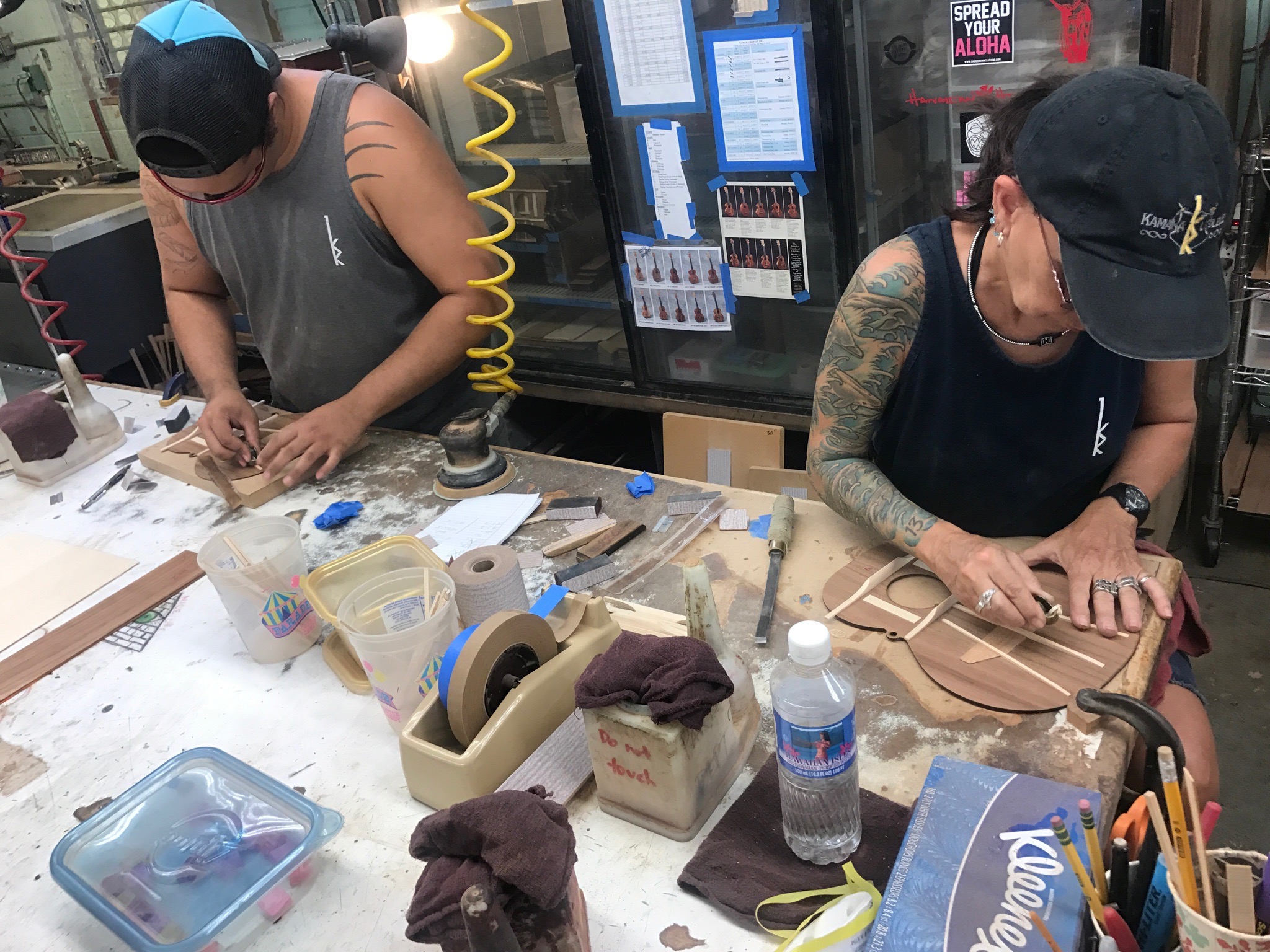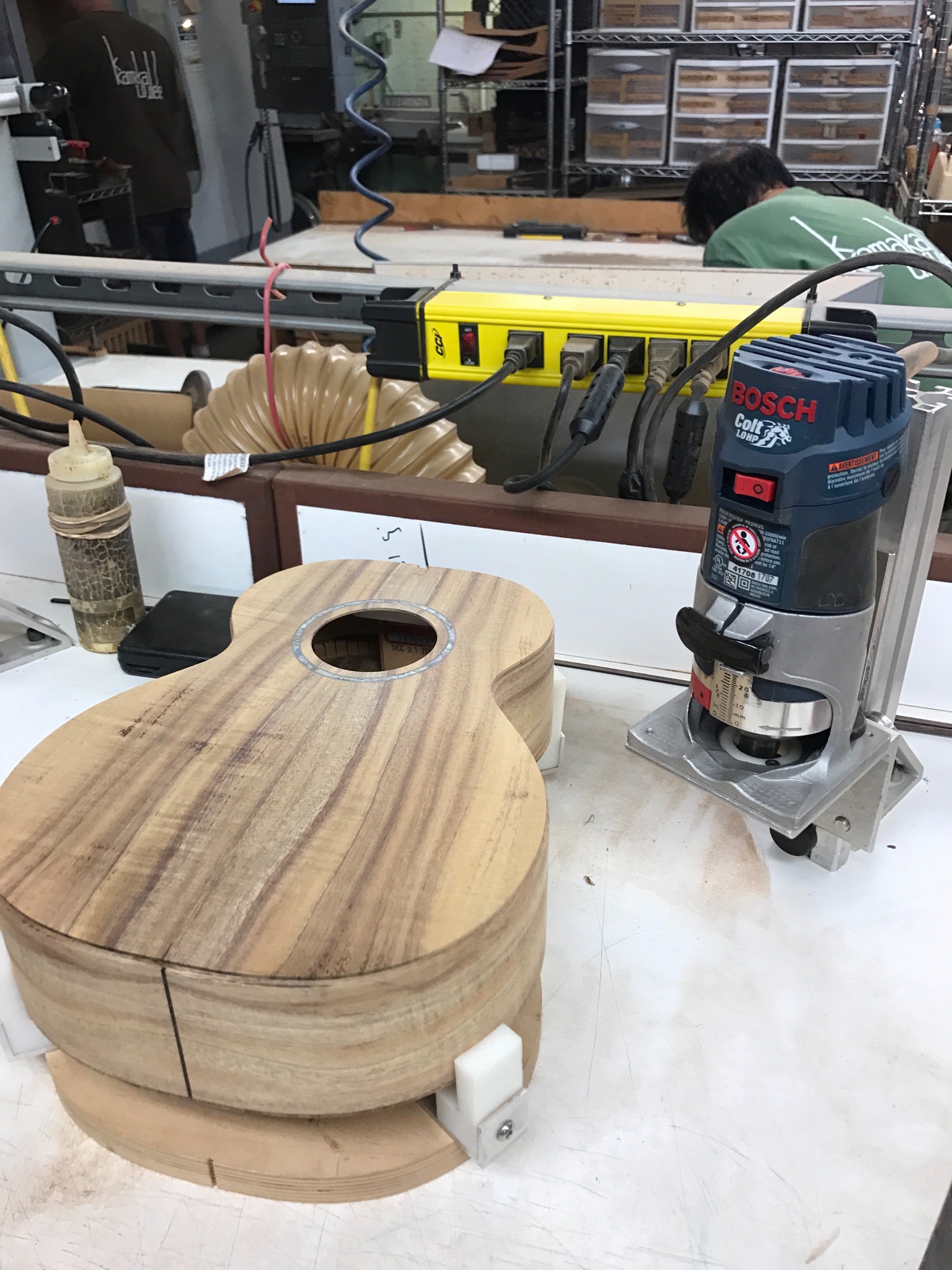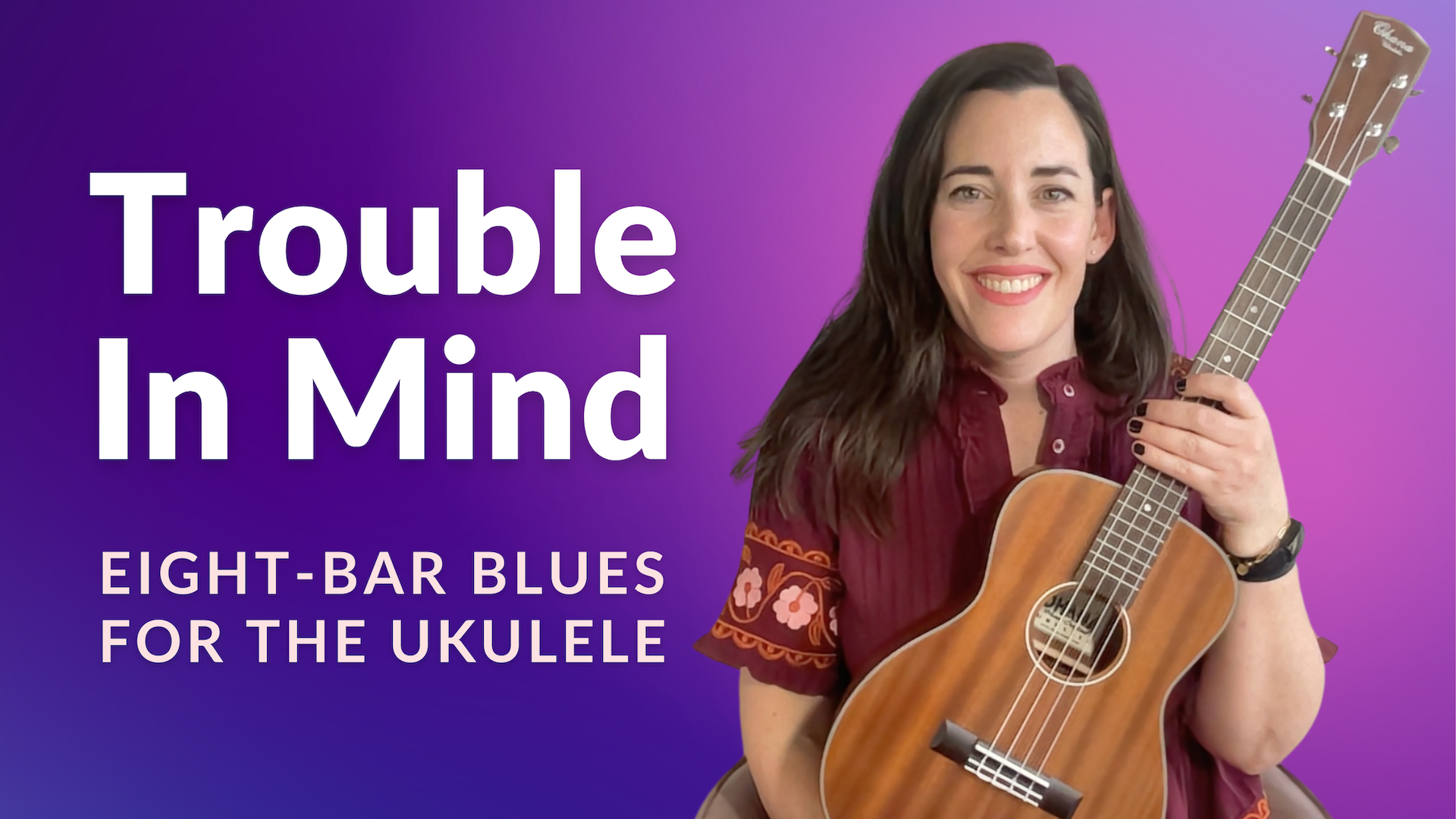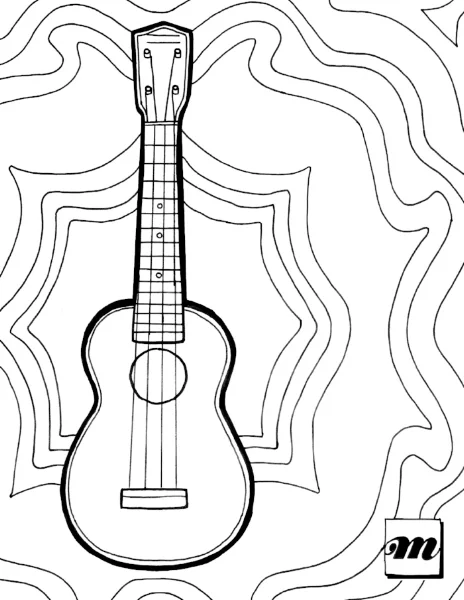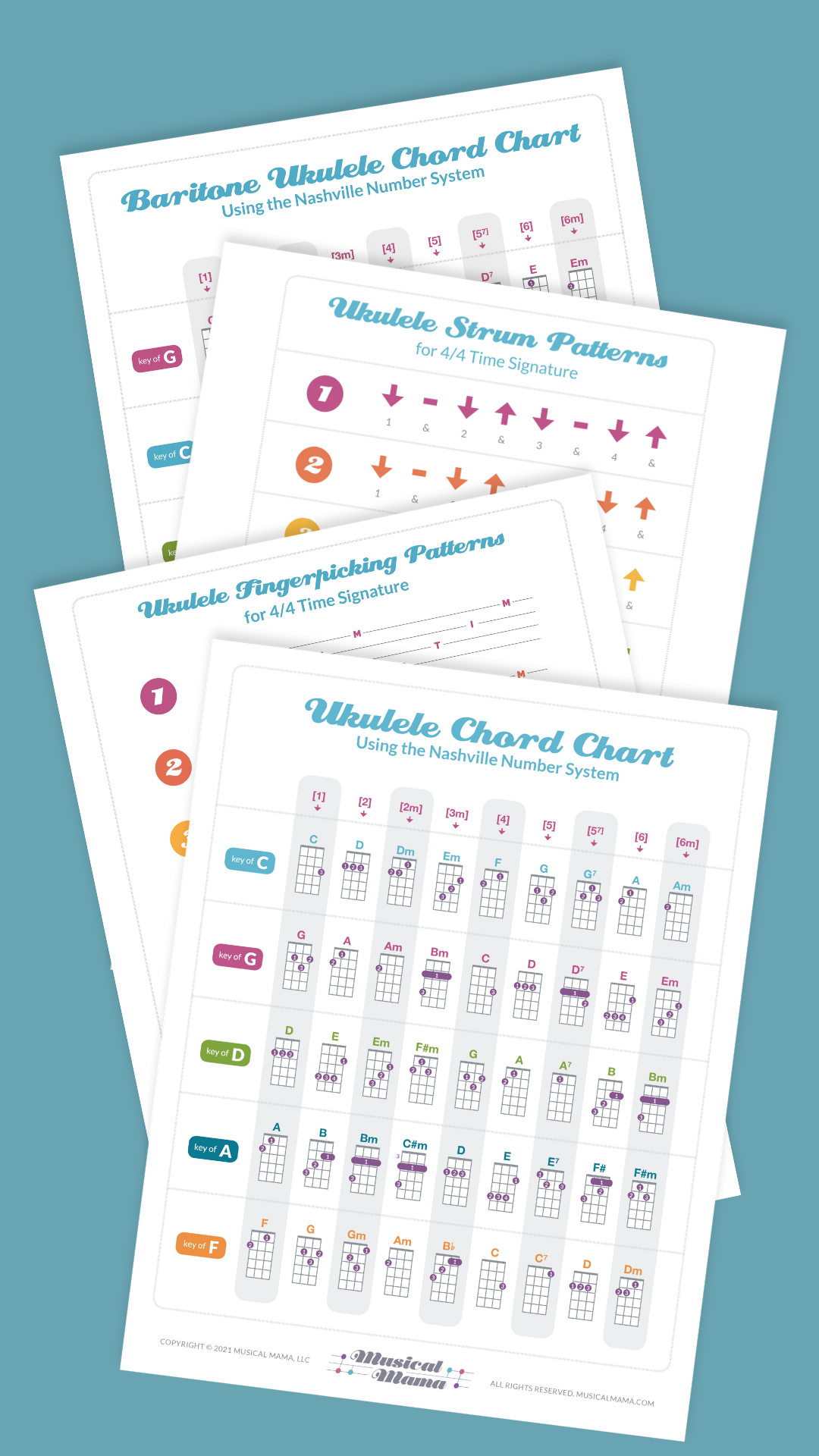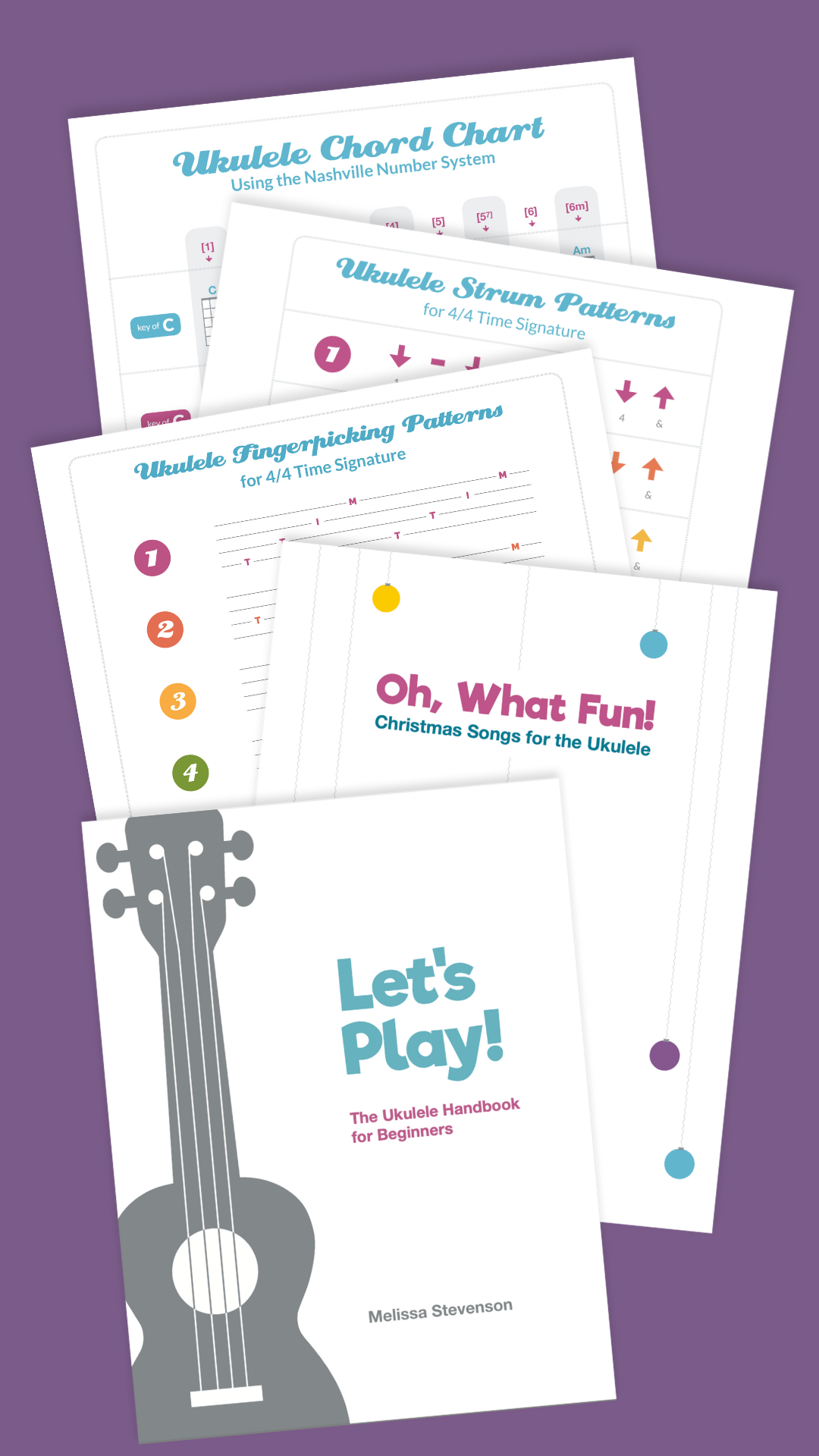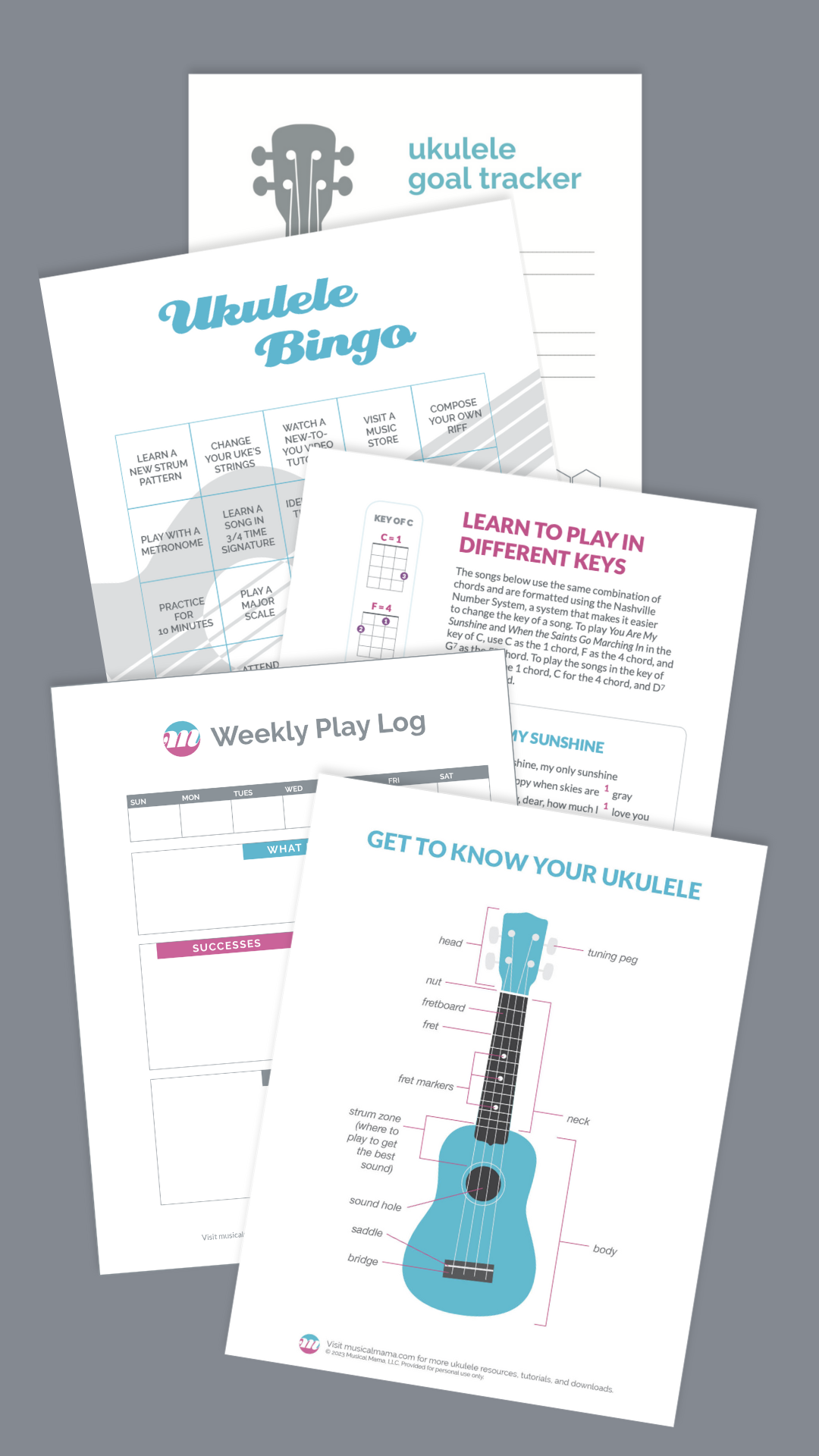Unless you're a regular reader of sheet music, you probably don't spend too much time thinking about time signature! But time signature is an important piece of information that tells you about the rhythm of the song you're trying to play, and it dictates the count of your strum.
4/4 time: A song in 4/4 time has four beats per measure and is counted 1, 2, 3, 4, 1, 2, 3, 4, and so on. 4/4 time is also called “common time” because it is the most common time signature for pop, rock, R&B, folk, etc.
3/4 time: A song in 3/4 time has three beats per measure and is counted 1, 2, 3, 1, 2, 3, and so on. This time signature is also quite common and is often referred to as waltz rhythm.
In my beginner's ukulele course, we learn strums for playing in both of these time signatures. Beginners occasionally get confused about the difference between the two, so I've created a video to help with that!
Note: If you're clapping along to a fast-paced song, you'll no doubt have to increase the speed of your claps! If you're clapping to a slower song, you'll be paced similarly to the examples in the video.
Popular 3/4 Songs:
Oh, My Darling Clementine, Down in the Valley, My Bonnie Lies Over the Ocean, Amazing Grace, Lavender's Blue, Rock a Bye Baby, Little Boxes, and a LOT of Christmas songs are all in 3/4 time. Which one are you most familiar with? Try clapping out the 3/4 pattern as you sing it! Looking for more contemporary tunes to test this out with? Quora has a list of pop songs in 3/4 time. And playlists.net has a playlist of some, too.
Another example of a song in 3/4 that comes to mind (because my kids have been listening to it on repeat!) is "Gaston" from Beauty and the Beast soundtrack. Be prepared to clap quickly with this one, as it's pretty fast-paced!
Popular 4/4 songs:
Almost everything else! I refer to 4/4 time as the default time signature. It's the rhythm most beginning musicians start out playing, and it's the time signature our ears are most accustomed to.
More Unusual Time Signatures:
If you've totally nailed 4/4 and 3/4 rhythms, you may want to familiarize yourself with more complex time signatures. If you have a child who's 5 years or younger, I highly recommend attending a Music Together class! Each song collection includes at least one or two songs in a less common time signature. I've seen songs set in 6/8 (similar to 3/4), 7/8, 5/4, and 12/8. (I'd include links to songs but can't find versions on Apple Music, Spotify, or Youtube).
For more casual listening, Quora has a list of songs set in unusual time signatures.
Feel the Beat!
When you're making music, the absolute number one goal is to keep a steady beat. This is so much easier when you're actually channeling the rhythm of your music through your body. The clapping patterns in the video are a great way to start feeling the beat which, in turn, improves your overall strumming. Plus, it involves no special equipment, and it's something you can easily do when you're hanging with your kiddos!
Do you have a hard time keeping the beat? Or do you naturally have a good sense of rhythm and timing? I'd love to hear from you!
PS: Searching for the Gaston video sent me down a Youtube rabbit hole that uncovered this little gem of Josh Gad, Luke Evans, and Alan Menken singing it live at a Disney event.


